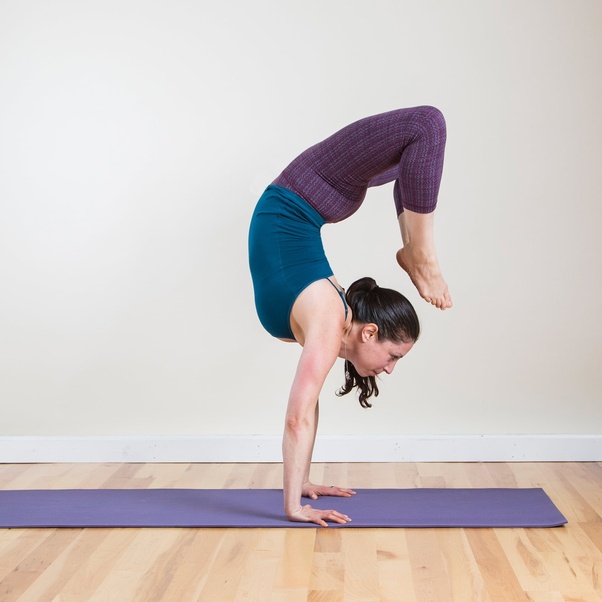Unveiling the Importance of Flexibility: Why Yoga, Ballet, and Gymnastics Demand More Than Average
The human body is a remarkable machine, capable of incredible feats of strength, agility, and grace. However, certain activities push the boundaries of what most people consider “normal” movement. Yoga, ballet, and gymnastics all demand exceptional flexibility, allowing practitioners to achieve poses and movements that seem almost impossible to the untrained eye. But why is flexibility so crucial in these disciplines? This article delves into the reasons behind this requirement, exploring the benefits of exceptional flexibility and the potential risks associated with its absence.
Beyond Aesthetics: The Functional Role of Flexibility
While the graceful stretches and contortions of yoga, ballet, and gymnastics might appear purely aesthetic, the need for flexibility goes far deeper. It plays a vital role in several aspects of movement:
-
Range of Motion (ROM): Flexibility directly affects your range of motion, which is the extent to which a joint can move in a specific direction. Greater flexibility allows for a wider range of motion in your joints, enabling you to perform the complex movements required in these activities.
-
Improved Performance: Increased flexibility allows for smoother transitions between poses in yoga, more fluid and expressive movements in ballet, and greater control and precision in gymnastics. It unlocks a wider range of motion, allowing for deeper stretches, higher kicks, and more challenging poses.
-
Injury Prevention: Tight muscles and limited flexibility can put undue strain on your joints, ligaments, and tendons, increasing the risk of injuries. Greater flexibility allows for better shock absorption and reduces the risk of muscle tears and sprains during demanding movements.
-
Posture and Alignment: Proper posture is crucial in all three disciplines. Flexibility helps maintain proper spinal alignment, which is essential for both preventing injuries and maximizing performance.
Understanding the “Normal” Range: Flexibility Spectrum
It’s important to acknowledge that “normal” flexibility can vary from person to person. Genetics, age, and previous physical activity levels all play a role. However, individuals involved in yoga, ballet, and gymnastics typically develop a level of flexibility that surpasses what most people consider “normal.”
Here’s a spectrum to visualize the concept:
-
Limited Flexibility: This might involve difficulty touching your toes or experiencing tightness in major muscle groups.
-
Average Flexibility: This is the range most people fall into, allowing for basic movements without significant limitations.
-
Exceptional Flexibility: This is the level sought after in yoga, ballet, and gymnastics, allowing for advanced poses, deep stretches, and highly controlled movements.
The Path to Exceptional Flexibility: Training and Techniques
Developing exceptional flexibility takes dedication and consistent practice. Here are some key strategies employed by yogis, ballerinas, and gymnasts:
-
Static Stretching: Holding stretches for sustained periods (usually 30 seconds to a minute) to lengthen muscles and increase their range of motion.
-
Dynamic Stretching: Incorporating movement into stretches, which can improve flexibility and prepare the body for dynamic activities.
-
Yoga and Pilates: Both disciplines emphasize proper form and controlled movements, promoting flexibility alongside strength and balance.
-
Targeted Flexibility Training: Focusing on specific muscle groups that require greater flexibility for the desired poses or movements.
The Importance of Balance: Flexibility and Strength
While flexibility is crucial, it’s not the sole factor. Strength plays an equally important role. Strong muscles provide the necessary support and stability to maintain poses and execute movements with proper form. It’s a delicate balance – flexibility grants the range of motion, while strength ensures proper control and prevents injury.
Are There Risks Associated with Pushing Flexibility Too Far?
Pushing flexibility beyond your body’s natural limits without proper training can lead to injuries. Here are some potential risks:
-
Muscle Tears: Overstretching tight muscles can lead to tears in the muscle fibers.
-
Ligament Sprains: Excessive strain on ligaments can cause sprains, which can be painful and take time to heal.
-
Joint Pain: Pushing flexibility too far can irritate or damage joints.
Safety First: Listening to Your Body and Seeking Guidance
It’s crucial to listen to your body and avoid pushing yourself to the point of pain. If you’re new to yoga, ballet, or gymnastics, it’s essential to seek guidance from a qualified instructor who can teach you proper stretching techniques and ensure you progress safely.
Conclusion: Flexibility – The Key to Unlocking Movement Potential
Exceptional flexibility is a cornerstone of success in yoga, ballet, and gymnastics. It allows practitioners to achieve challenging poses, perform graceful movements, and prevent injuries. By understanding the importance of flexibility and practicing safe stretching techniques, individuals can unlock their true physical potential and experience the joys of these rewarding activities.






More Stories
Where to Watch USMNT vs Jamaica National Football Team
How I Met My Monster
How Should a Ring Fit